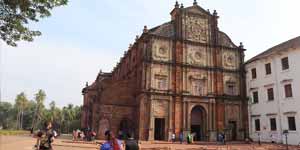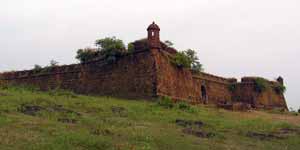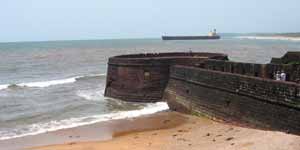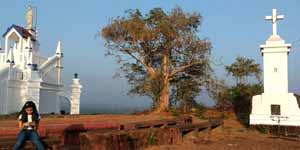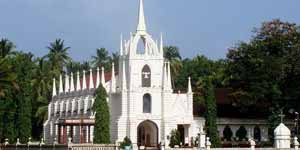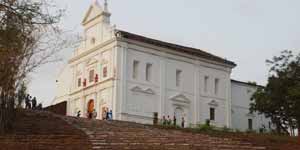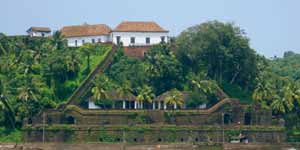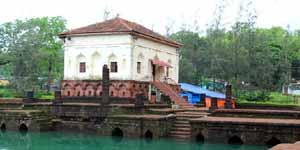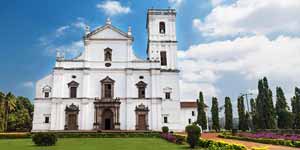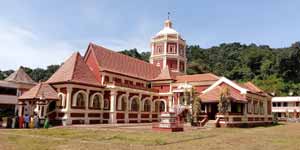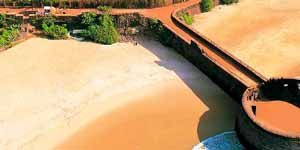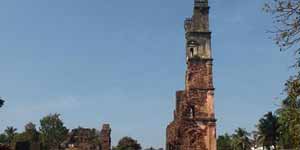
St. Estevam Fort
At a distance of 23 km from Panjim Kadamba Bus Stand, 40 km from Vasco Da Gama Railway Station and 36 km from Mapusa, St. Estevam Island is situated in North Goa.
St Estevam is an Island in Tiswadi, Goa. It is encircled by the Mandovi River on all sides and was connected to the mainland by the bridge only in the mid 1980s. Also known as Juvem and in the past it was known as Shakecho Juvo - the isle of vegetables. Santo Estevao is most famous for its premium seven-ridged, light-green and long lady finger or okra. That's why many people refer to villagers as 'bhendde'.
Juvem is the fourth largest island in Goa. This Island originally consisted of three small islets Jua, Tolto and Vantso with a canal connecting them. These small islets have been joined together into one island that is Santo Estevam. Juvem is rich in historical heritage and natural beauty. There is a fort situated here on a hillock which was built in September 1668. It was named as the fort of St Francis Xavier and is also known as the fort of Jua. From the village, the fort of Jua can be approached by means of a fairly terrific flight of rough steps. The climb is well worth the effort and at the top is a modern but impressive shrine to Christ the king. It has a special incident related to it where a sailor used to pray here regularly at the shrine before rejoining his ship as he was deeply attached to Goa and loved to view it regularly from this fort.
The island was converted to Christianity at the end of the 16th century by the sacred spirit of the Jesuits, who built the first church in Santo Estevam in the year 1575. The Church of Santo Estevam is the big Church of all churches built in 1575 by the Jesuits. In 1683 the Church had been burned when the Island Martha King Sambhaji. The Church was rebuilt in 1759. It is special due to its exterior portion resembling a false dome surrounded by twin towers with lanterns. The villagers celebrate the feast of St Stephen on 26th December with great pomp.
Monuments in Goa
Monuments In Goa If your planning to come on a holiday to Goa, dont ever miss a chance to explore the monumental wonders that flavour this palm-fringed place! Tourists from all over the world cluster here to muddle up with the golden sand and beaches of Goa. Surprisingly very few people are aware of the fact that besides, being a beach state, this place is actually a treasure trove of architectural marvels. You will be amazed to see an impressive array of medieval European architecture - an exclusive interweaving of Portuguese-Gothic style with a Tuscan exterior and Corinthian interior - exhibited inside the walls of these spectacular monuments. The sheer scale and proportion of the country mansions together with the magnificence of its interiors makes them the grandest of all country mansions.
A monument is a statue, building, or other edifice created to commemorate a person, event or as an artistic object. They are frequently used to improve the appearance of a city or location. The Ancient Monuments and Archaeological Sites and Remains Act, 1958 defines an Ancient Monument
Ancient Monument means any structure, erection or monument, or any tumulus or place of interment, or any cave, rock-sculpture, inscription or monolith which is of historical, archaeological or artistic interest and which has been in existence for not less than 100 years and includes:- remains of an ancient monument, Site of an ancient monument. Such portion of land adjoining the site of an ancient monument as may be required for fencing or covering in or otherwise preserving such monument,The means of access to, and convenient inspection of, an ancient monument.
Some of the beautiful monuments of goa are:- Viceroys Arch Goa, Statue of Abbe Faria Goa, Azad Maidan Goa, Goa Medical College Goa etc.
The calm churches, rugged forts, exquisite temples and grandiose country mansions of Goa attract countless tourists from all over the world. So, feel the pleasure of visiting these numerous structures that highlights this beautiful beach land of India.


